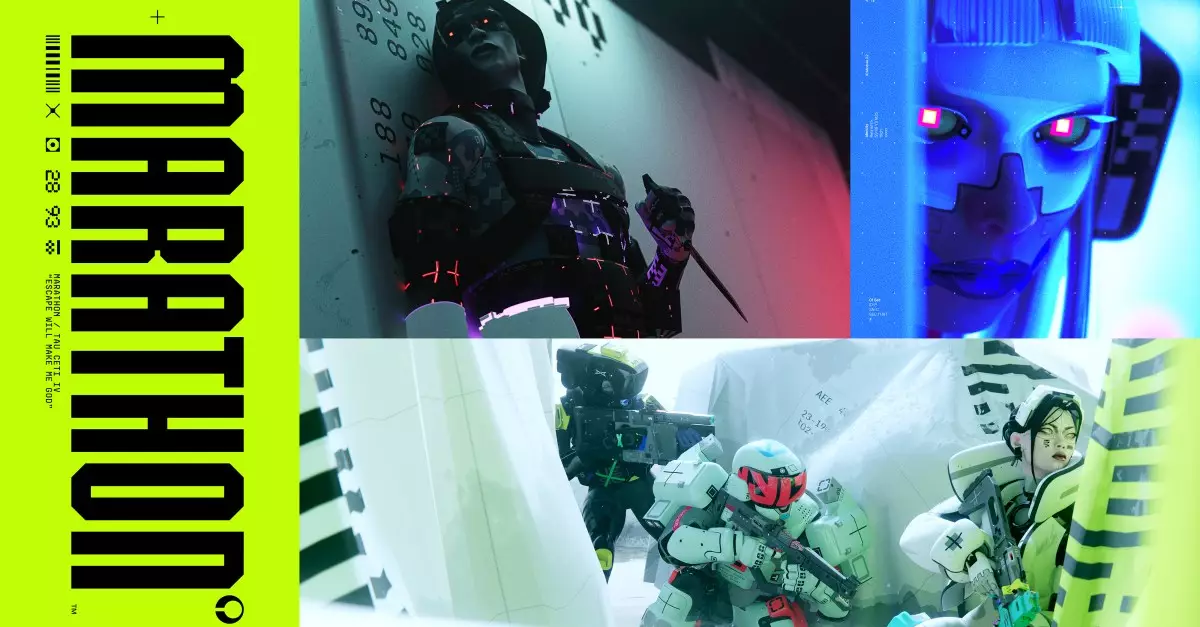Bungie, the revered studio behind gaming staples like Halo and Destiny, is poised to unveil its latest creation: Marathon. More than just another addition to the crowded landscape of first-person shooters, Marathon is a significant revival of the classic franchise and is crafted as a PvPvE (Player versus Player versus Environment) extraction shooter. Scheduled for a closed alpha test on April 23rd, fans and critics alike are buzzing with anticipation, eager to witness how this new title will reinvigorate the genre that has seen its share of lukewarm receptions and outright failures in recent years.
With Marathon set in the year 2850, players will find themselves in the eerie remnants of Tau Ceti IV, a planet steeped in mystery after its inhabitants vanished. Here, rival factions enlist Runners—those who’ve traded their human forms for advanced biosynthetic shells—to scavenge the remnants of this lost colony. This setup not only invites players into a thrilling sci-fi world but also encourages exploration, cooperation, and strategy, setting the stage for intense engagements both with environmental foes and other players navigating the same treacherous landscapes.
Navigating a Dynamic Gameplay Environment
What distinguishes Marathon from its counterparts is its combination of PvP and PvE mechanics, fostering a gameplay environment ripe for strategic decision-making. Players will form crews of up to three, but the allure extends beyond teamwork. Solo players can also engage, providing a fluidity that allows gamers to adapt their playstyle according to their preferences. The diverse mechanics invite both camaraderie and competition, as players weigh the risks of engaging hostile NPCs against the looming threat of rival Runners looking to secure valuable loot.
In terms of gameplay mechanics, Marathon appears to strike a balance between chaos and calculated strategy. The dynamic maps, adorned with striking visuals and rich lore, invite exploration and engagement. However, players are constantly faced with the dilemma: is it worth battling the PvE creatures that roam the world, potentially revealing their position to other teams, or should they adopt a stealthy approach to avoid unnecessary confrontation? This duality in gameplay is a hallmark of what an engaging extraction shooter should be—a race for survival that tests not only reflexes but also decision-making ladders.
A Cast of Unique Characters
At the heart of Marathon’s gameplay are the various Runners, each offering distinct abilities that cater to different playstyles. In the upcoming alpha test, players can experiment with four different characters—each with unique strengths and attributes. Whether you prefer the stealthy Void character, reminiscent of Destiny’s Hunters, or the Glitch Runner with its fast-paced glitching abilities, Bungie seems to be catering to a wide array of player preferences.
However, it’s essential to analyze how these runners affect overall gameplay balance. Allowing a team of three to consist entirely of the same Runner, a tactic reminiscent of team compositions in many role-playing games, may lead to underexplored strategies where predictability reigns, potentially detracting from the game’s intended dynamic. Strike the right balance, and these characters could offer unparalleled replay value; veer too far, and Marathon could risk founder fatigue before it fully takes off.
Challenges and High Stakes in a Crowded Market
As Marathon prepares for its full release on September 23rd, Bungie stands at a crossroads rife with challenges. The gaming landscape is inundated with numerous live-service shooters that have either struggled to maintain relevance or suffered from abrupt closures. Notably, titles like Concord and Spectre Divide failed to hook audiences, shedding light on the delicate balance of innovation versus market saturation.
In this context, Bungie’s established reputation both accelerates anticipation and amplifies expectations. The lessons learned from past ventures are paramount, and though the intricacies of Marathon’s gameplay design and lore may draw players in, the overarching question remains: Can it capture a sustainable audience in a genre that has seen so many high-profile missteps? The closed alpha may provide the answers—but it will also act as a litmus test for Bungie’s strategic direction.
Critical Insights on Pricing and Accessibility
One area where gaming narratives often falter is pricing strategy. The absence of clarity surrounding Marathon’s pricing structure could prove to be a double-edged sword. Although Bungie indicates it will not be free-to-play, without a transparent model for content access, players may find themselves navigating a confusing web reminiscent of Destiny 2’s layered monetization scheme.
If Bungie is to seize the moment and redefine the extraction shooter genre, establishing a straightforward and fair pricing strategy is crucial. Players should know early on what investments they’re making, ensuring engagement isn’t shrouded in uncertainty. With persistent questions already percolating regarding pricing models, it’s imperative that Bungie addresses these concerns head-on rather than allowing them to fester as the launch date looms.
Marathon is not merely a game aiming for release; it is the next evolution in the shooter genre, a challenge to conventions and expectations that could either thrive or struggle against the backdrop of gaming’s tumultuous landscape.

